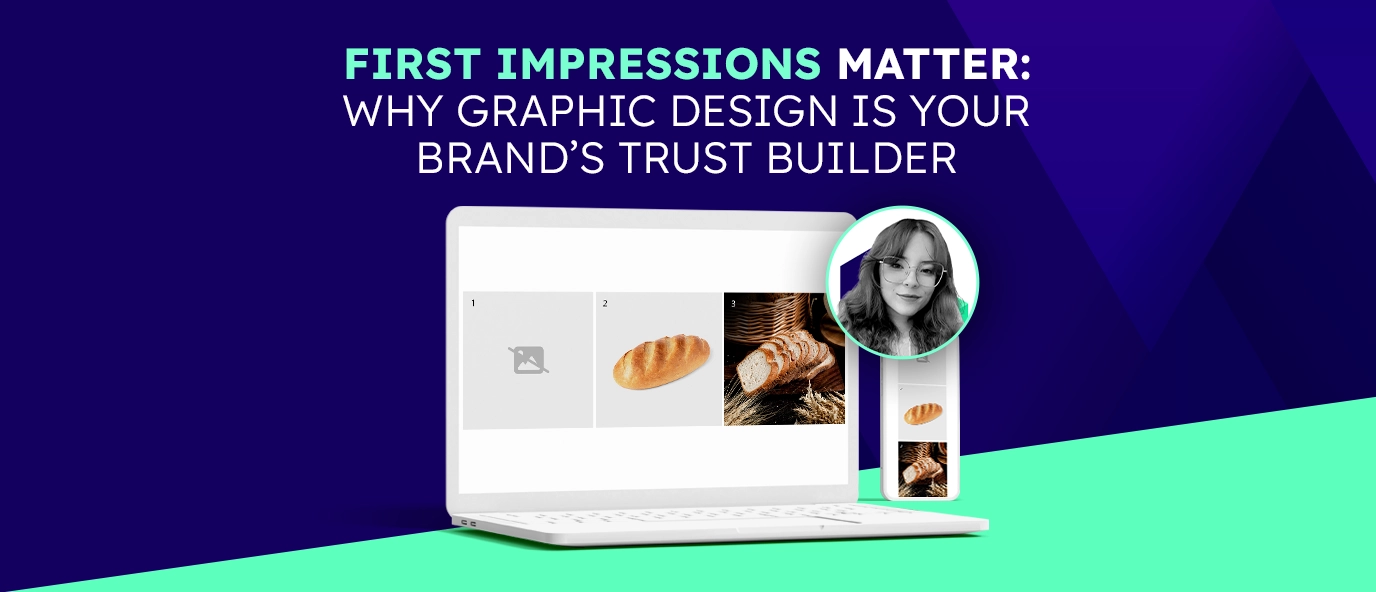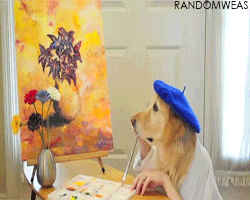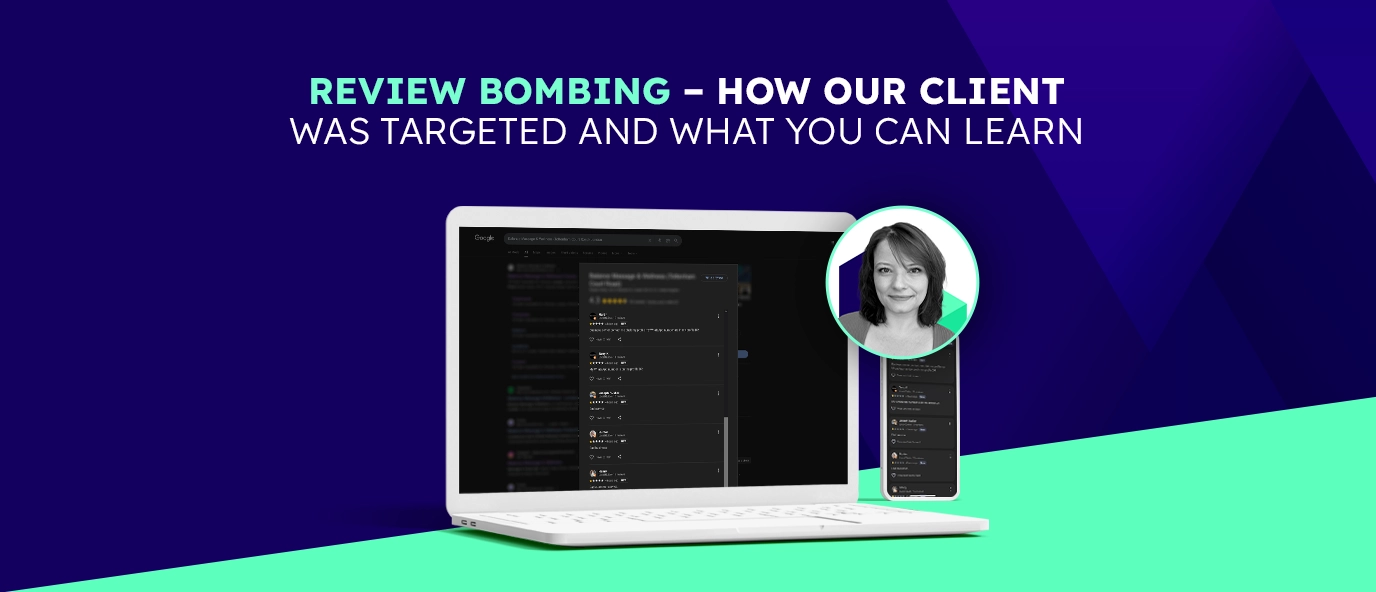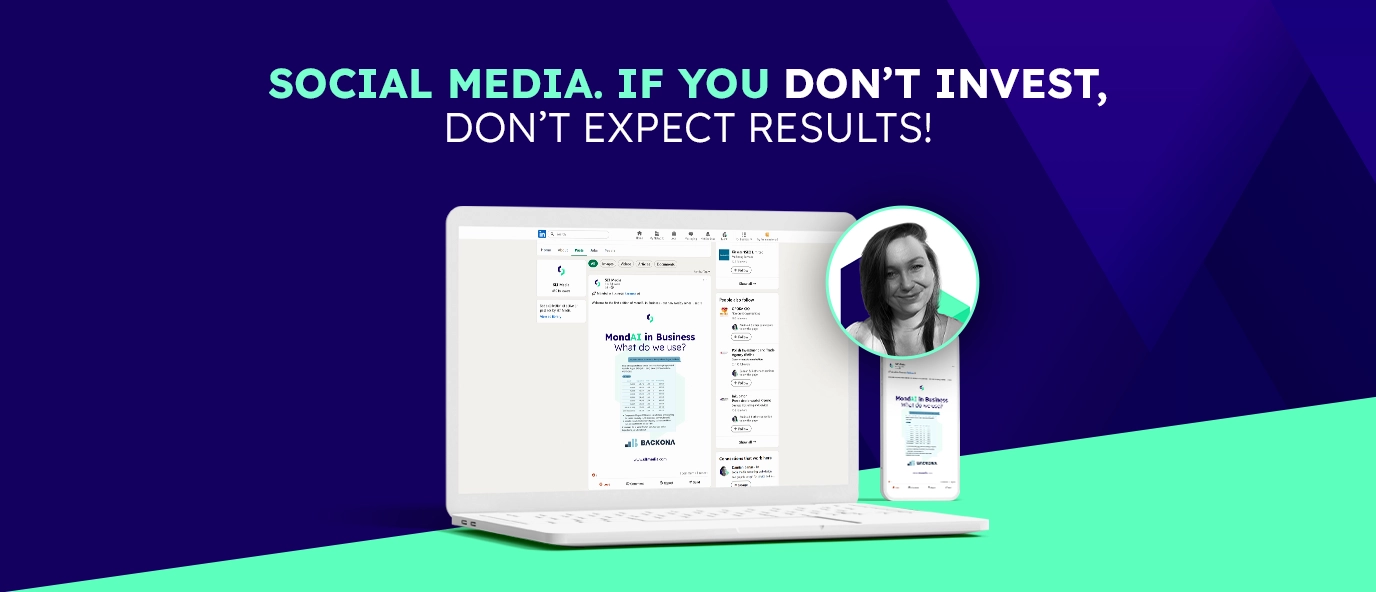
First Impressions Matter: Why Graphic Design is Your Brand’s Trust Builder
Would you trust a brand with a pixelated logo? Or perhaps a company using a font that doesn’t have all the correct characters? Most people won’t trust – in fact, 75% of consumers judge a company’s credibility based on its website design alone.
Would you trust a brand with a pixelated logo? Or perhaps a company using a font that doesn’t have all the correct characters? Most people won’t trust – in fact, 75% of consumers judge a company’s credibility based on its website design alone. [Source].
Design is more than just aesthetics, it’s more than looking nice – it’s about trust!

Design speaks when there’s no one else. Often you’ll find yourself getting recommendations from friends or influencers – for a product, service, or company. Trusting their word. But sometimes you might not know anyone with the right recommendation – the decision then falls to you to do your own research. The first thing you’ll find is the company’s branding. From there, you’ll decide if it’s worth looking into reviews or not. Their design is that first point of contact, first trust factor.

Why trust matters
‘Why does it matter if a customer trusts my company?’ Easy. More trust equals more money a customer is willing to spend.
To put it very simply, here are some photos of a loaf of bread. From photos alone, which bread would you choose to buy? 1, 2, or 3?

Image 1 is probably immediately out of the question. You wouldn’t even consider buying that loaf. Why would you? There is no information for you to safely trust the product.
Image 2 is already miles better than the 1st. But if there’s no size in the description, how would you know if it’s the size of a singular roll or the size of an average bread loaf? It lacks information, but it’s the bare minimum to keep you interested, to get you to keep reading, to stay and find more information.
Image 3 stands out not only because it’s creative, but also because it includes familiar objects within the frame. These references make it easy for viewers to judge size based on what they already know. The colours of these surrounding items also help to showcase the product’s true tones.
In image 2, for example, you can’t tell whether the loaf is naturally pale. But in image 3, those familiar items provide instant context, allowing our brains to “connect the dots” almost effortlessly.
Beyond that, it demonstrates that the company has invested in high-quality photography. This benefits both sides: the company attracts more clients with professional visuals, and consumers feel reassured that the brand values its products enough to present them well. In turn, this signals quality – and makes customers confident they’re getting real value for their money.
Investing in professional product photography pays off long-term. High-quality images can be reused across your website, banners, social media, posters, leaflets – the possibilities are endless. Consistently using photos that share the same colour tones and style not only saves time and resources, but also builds a trustworthy, consistent brand.
A small investment that keeps on giving.

The same goes for investing in a professional logo, website, posters, leaflets, etc. If you invest your money into a quality service, you will see results. Cutting corners often costs trust. Cheat in a race and you’ll get disqualified. You might not get disqualified in the business world, but it will be much harder to build up trust if you start with dishonesty.
This doesn’t mean you need to spend more money than you have, if what you can budget is photos like shown above – number 2. Then that’s better than the 1st, you’re still being honest in the products you’re selling. Use those photos until you can afford better. But always know there’s room for improvement. There’s even room to go up from number 3. Never settle.
To conclude this section and not drag it more than I already have – Common Mistakes That Undermine Trust:
- Inconsistent branding – using different brand names, logos, colours, fonts, photo styles. Choose who you are, who your company is, and commit to it.
- Overly trendy design that lacks longevity – you can always rebrand, but you don’t want to do this too often, you can lose trust that way too, there’s enough things people need to remember, and having to remember who you are when you’re constantly changing your look is just going to make people avoid you.
- Cluttered or hard-to-navigate websites – less is more! Let’s not over complicate things in such a complicated world we already live in.
- Poor readability and mobile unfriendliness – a large population of the world primarily uses their mobile device to browse, create something mobile UNfriendly and you’re preventing yourself from reaching all those people.
Avoid these and you’re on the right path.

The role of a graphic designer
Let’s look at some statistics first: [source]
- 93% of businesses are active on Facebook, and 86% also take advantage of Facebook advertising.
- Currently, there are 67 million companies on LinkedIn (stats from 2024) – which increased from 55 million in 2023.
- There are more than 200 million business accounts on Instagram.
And
- The average local business puts 5-10% of its revenue towards its digital marketing budget, but for larger businesses, that number can climb to about 14%.
Reading those statistics, how confident do you feel that you will be able to rise above all your competitors?

This isn’t to say you can’t or you won’t. There are always exceptions. However, in our experience, a lot of start-up companies simply don’t have the time, or interest to put in the time to learn all of our marketing magic.
View us or any other graphic designer or marketing agency as another important employee in your team of skilled professionals. We all have a set of skills important for your company to thrive.
Coming back to the role of a graphic designer – it’s quite straightforward:
In order to not add more examples and make this post confusing, I will use the bread as a reference of what your business looks like in terms of those 3 images and the choices you make:
Image 1 / No image – You have no brand identity. You don’t have a logo. No website. Your company barely exists and it’s almost impossible for you to make a sale of any kind without any sort of presence. Even if it’s not online, even if you’re wanting to sell things or services physically, you need a brand, without it, anyone who is thinking of buying something from you, won’t know where to return, they might fall in love with the product, and without a brand they’ll struggle to know where to return, or if they fear they might have an issue with the product, they might feel discouraged to buy if they feel like they won’t be able to come back to make a return or exchange. No brand, no trust.
Image 2 / The bread on a white background – You have used online tools to create your own brand based on the ideas you have. This may include an online logo generator (highly DON’T recommend, you could easily find yourself in some legal trouble further down the line), Canva designs. Online website templates. This is usually where most people start. They try to save themselves some money and attempt to do it all themselves. Which I have to admit, is better than nothing. Having something will always be better than nothing. But this option leaves a lot of room for error. Inexperience can drag you down quite quickly, you might find yourself with a broken website that takes 20 seconds to load, which is very bad! Or you might find yourself with a logo that is too small of a resolution and will look pixelated above your shop. Or you might find your clients are finding spelling errors all over your leaflet. Having extra eyes and hands to help makes these tasks run a lot smoother.
Image 3 / The professional studio bread – You have chosen a marketing agency or hired your own graphic designer for your team. You have invested, and your business is loving you for it. You have time to focus on other important business-related things, or even to give your home life a little more love – whilst we work in the background creating a trustworthy consistent brand. You trust us with your business and in turn we help you create something amazing. You always have support and advice just an email or a phone call away, and there will always be someone you can rely on to keep your business current and thriving.
People can typically tell the difference between a company that uses a professional marketing agency or graphic designer, vs one that does it themselves using online tools. Typically with professional marketing, you don’t even think about the design, you’re already drawn in by the content.There’s nothing about the designs that throws them off the primary reason. When a design is made within Canva or anything similar, people will usually be able to tell that maybe the spacing isn’t quite right, or maybe the contrast of the text on the background isn’t good enough and is hard to read.
To summarise our role:
- We bring over 15 years of experience, knowledge, and creativity.
- We invest in the right tools – from professional software to powerful hardware – and, importantly, we have the expertise to use them effectively.
- We draw on a wide network of trusted contacts built up over the years.
- Most importantly, we dedicate ourselves to helping you build a brand that is consistent, trustworthy, and true to its values and mission.
We are here to keep you and your business above your competition.
The saying ‘two heads are better than one’ was not created in vain. One head being you and your team, the other head being us and our team. Let’s collaborate!

 en
en  pl
pl







